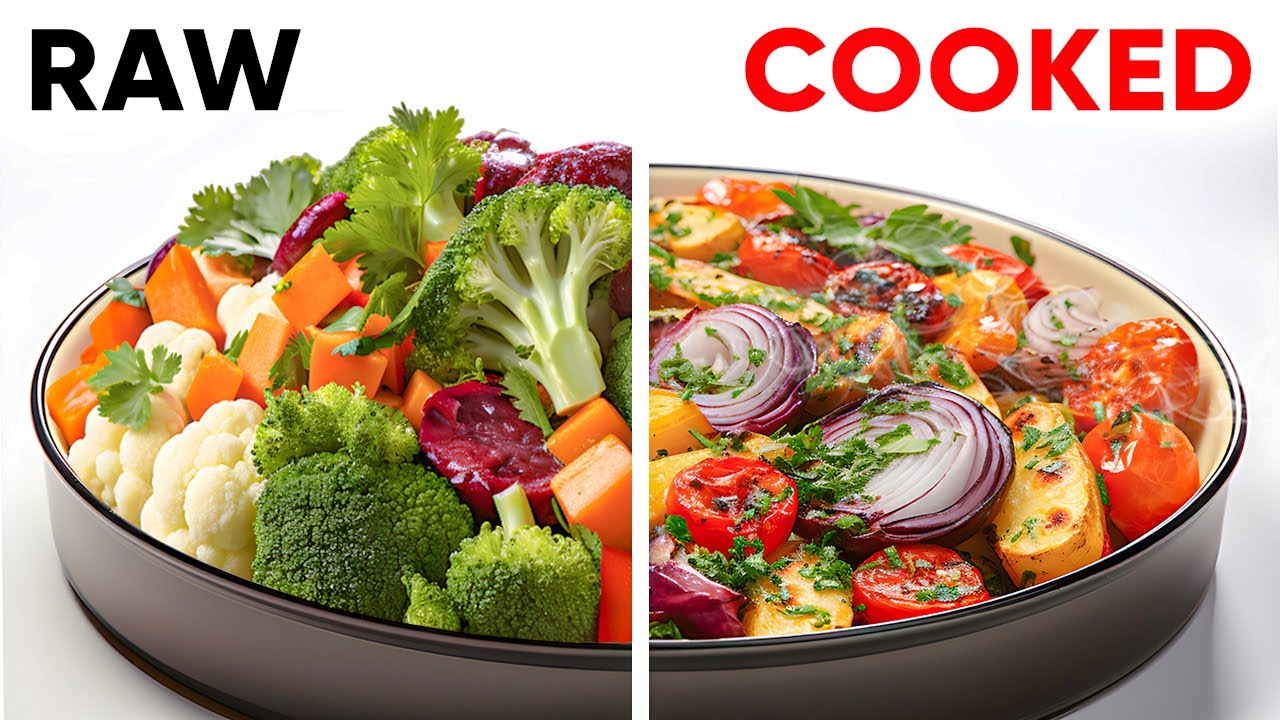“Raw vs Cooked Vegetables: Which Retains More Nutrients?” dives into a long-standing nutrition debate — and the verdict isn’t as simple as one might think.
Neither raw nor cooked vegetables are always better; the key lies in how they are prepared. Each method offers unique benefits for your body’s nutrient absorption, digestion, and overall health.
🥬 Why Raw is Sometimes Better
Eating raw vegetables can help retain certain heat-sensitive nutrients that are easily destroyed during cooking.
1. Vitamins:
Raw spinach, kale, broccoli, and peppers are rich in Vitamin C and folate — both water-soluble nutrients that can break down in heat.
2. Enzymes & Antioxidants:
Raw veggies preserve natural enzymes and antioxidants that support digestion, cellular repair, and immunity.
3. Fiber:
The fiber in raw vegetables remains more intact, promoting gut health and a feeling of fullness.
⚠️ Note: Some people with sensitive stomachs may find raw vegetables harder to digest.
♨️ Why Cooking is Sometimes Better
Cooking isn’t the enemy of nutrition — in fact, it can make certain nutrients more bioavailable and improve digestion.
1. Easier Digestion:
Heat breaks down tough plant fibers, making veggies easier to chew and gentler on the digestive system.
2. Nutrient Bioavailability:
Cooking boosts the absorption of fat-soluble vitamins (A, E, K) and increases the availability of antioxidants like lycopene (tomatoes) and beta-carotene (carrots, sweet potatoes).
3. Mineral Absorption:
When heat breaks down cell walls, your body can better absorb minerals such as calcium and iron.
4. Reduces Anti-Nutrients:
Cooking lowers compounds like oxalates (found in spinach and beets), which can interfere with mineral absorption and contribute to kidney stones.
5. Food Safety:
Cooking also helps kill bacteria, making vegetables safer to eat.
🧑🍳 Best Cooking Methods for Nutrient Retention
Not all cooking techniques are created equal — some preserve nutrients far better than others.
-
Steaming: Retains the most vitamins and minerals, especially Vitamin C.
-
Microwaving: Uses minimal water, keeping water-soluble nutrients intact.
-
Stir-Frying & Sautéing: Quick cooking with little oil helps preserve nutrients while enhancing absorption of carotenoids.
-
Boiling: Avoid when possible — many vitamins leach into the cooking water.
🥗 Practical Tips from the Experts
The Times of India article recommends a balanced approach:
-
Mix it up: Enjoy both raw salads for crunch and roasted or steamed veggies for warmth and enhanced nutrition.
-
Save the cooking water: Use it in soups or sauces to reclaim lost minerals.
-
Digestive concerns? Lightly cook your vegetables to soften the fiber and make them easier on your stomach.
🌿 Final Takeaway
When it comes to raw vs. cooked vegetables, there’s no one-size-fits-all answer.
The healthiest plate is one that includes a colorful mix — some raw for freshness and crunch, others cooked for better nutrient absorption.







Leave A Comment